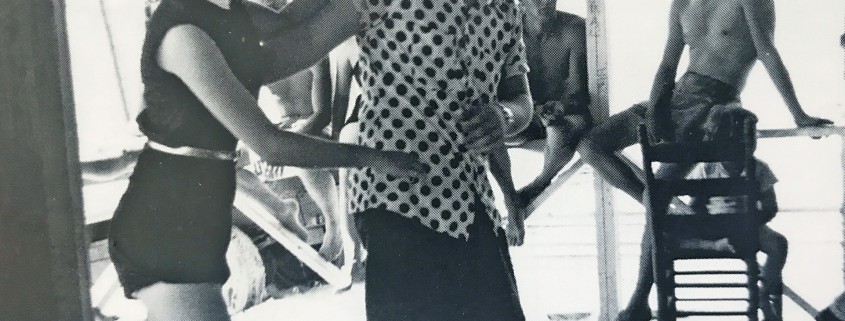Society of Stranders
Nostalgia for the Shag took root in the early Seventies. Competitive dancing rescued the art from oblivion. In 1980, an old lifeguard from Richmond, Virginia, Gene Laughter, thought he’d throw a party for a couple of hundred ex-beach bums and mature magnolias. Thousands of people showed up. Ocean Drive, that is, North Myrtle Beach was inundated. For a long weekend, everyone threw off the platinum handcuffs of career and family and devoted a hundred and twenty hours to remembering the golden days, regardless in which decade those days had passed. The old crowd actually danced in the streets.
The Shag was the only art they collectively practiced. The old dance the music and the crowd all came back together. The Shaggers locked arms in a lifeboat of memory and sent out the S.O.S.
Twice a year, the Society of Stranders hosts the largest beach party in the world. The faithful and hardcore come together to dance. The crowds pack a six-block area of North Myrtle Beach. The Shag joints jump. There are no fights in the streets nor even a serious frown in the crowd. The overriding emotion seems to be love.
Today, the Society of Stranders and The Association of Carolina Shag Clubs lists members from Cincinnati to St. Louis, San Diego to Memphis. It’s estimated that eight hundred thousand people nationwide are at least partially familiar with the Shag and know something of its origins and lore. South Carolina has made the Shag its official state dance, and there’s a movement in North Carolina to do likewise.
The birth, near death and resurrection of a unique dance culture is thus briefly outlined. To clarify the legend of the Shag and to reveal, in some detail, the development of the art form, requires a few more turns around the dance floors of history. Stay tuned.
PHOTO: Dancing at Robert’s Pavilion in the 50’s courtesy of Sumner Waite.



